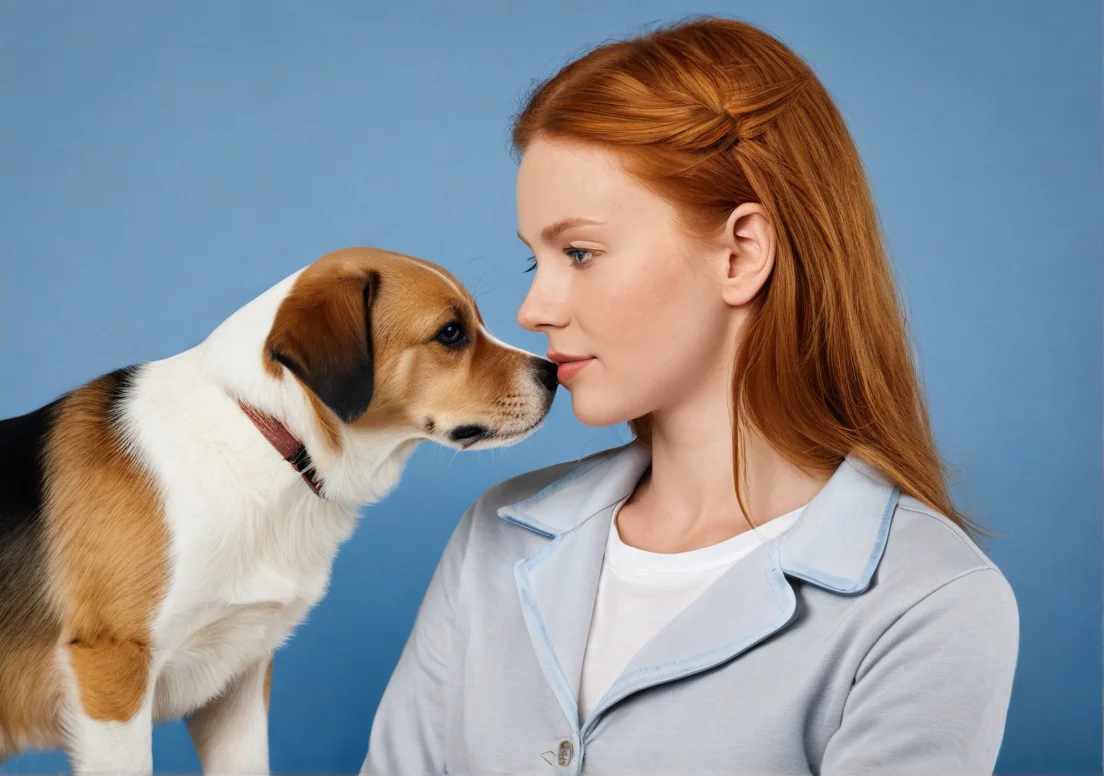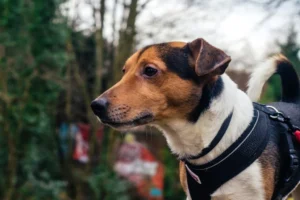Training your dog to interact safely with children isn’t just important; it’s essential. A well-trained dog can foster a loving environment where kids and pets coexist peacefully. It’s more than just commands; it’s about creating trust and understanding between your dog and your little ones.
The key to training your dog for safe interaction with children is consistency, positive reinforcement, and socialization. It’s crucial to teach your dog boundaries and encourage gentle behavior around kids, ensuring that both the dog and children feel secure. Want to unlock the secrets behind effective training methods? Read on; there’s so much more to explore!

Start with Basic Commands
Establishing control through basic commands is essential for ensuring safe interactions between your dog and children. Commands like sit, stay, and down work wonders in setting boundaries. Teaching your dog these commands isn’t just about obedience; it’s about instilling a sense of calm and structure in their behavior.
Start with short training sessions, using positive reinforcement. Each time your dog successfully follows a command, reward them with a treat or plenty of praise. This creates a positive association and encourages them to repeat the behavior. It’s crucial to practice these commands in various environments to help your dog respond reliably, whether at home or out in public.
Focus on building a solid foundation. Once your dog reliably performs commands in a distraction-free environment, gradually introduce them to more stimulating situations, like having children around. This will enhance their learning and help them translate commands into real-life scenarios involving kids.
Socialize Your Dog with Children
Socializing your dog with children plays a pivotal role in creating a harmonious relationship. Exposing your dog to kids in controlled environments can build their comfort and understanding. Start with introducing them to calm, well-behaved children. This allows your dog to observe proper behaviors and gradually adapt.
Ensure these interactions are positive; keep the atmosphere light. Use treats and toys to make experiences enjoyable for both your dog and the kids. Encourage gentle behavior, reinforcing your dog when they remain calm and engaged. If your dog shows signs of stress, take a step back and allow them time to adjust.
Try organizing playdates where your dog can interact with children for short periods. A good idea is to establish a “safe spot” where your dog can retreat if they feel overwhelmed. This safe space can be a crate or a quiet corner of the room. Kids should be guided on how to approach and engage with your dog, emphasizing gentle touch and patience.
By regularly exposing your dog to children in these safe, engaging contexts, you’ll foster a relationship built on trust and mutual respect. This foundational trust helps prevent misunderstandings and promotes a safe environment for everyone involved.
Use Positive Reinforcement Strategies
Training your dog to interact safely with children hinges on positive reinforcement. It’s all about making the experience enjoyable and rewarding for your pooch. Use treats and praise as your go-to tools. For example, when your dog behaves well around kids—like sitting calmly or allowing gentle petting—reward them immediately. This method reinforces the behavior, making it more likely to happen again.
Consider using a clicker during training. That little sound signals to your dog that they’ve done something right, which can accelerate learning. Combine that with treats, and you’ve got a powerful strategy.
Don’t forget about praise—enthusiastic words and a happy tone can boost your dog’s confidence. Consistency is key, so make sure everyone in your household is on the same page about what behaviors are encouraged. Over time, your dog will associate children with positive experiences and be more relaxed around them.
A unique angle on this could be to set up practice sessions with friends or neighbors who have kids. Create situations where your dog can earn rewards for calm behavior. This real-world practice can build their comfort level and improve interactions when it counts.
Monitor Dog’s Body Language
Your dog’s body language tells you a lot about how they’re feeling, especially when kids are around. It’s crucial to tune into those subtle signs of stress or discomfort. Key indicators include:
- Tail position: A tucked tail often signifies fear.
- Ears: Ears pinned back can mean your dog is anxious or defensive.
- Eyes: Avoiding eye contact or wide-open eyes can signal stress.
If you pick up on these cues, take action. For example, give your dog some space or redirect their attention to a toy. This can prevent escalation and unsafe interactions.
Also, recognize that not all dogs are naturally great with kids. Training can take time. Being proactive means you’re less likely to face issues down the road. Observe your dog’s reactions and adjust your training accordingly. When you foster a safe environment, both your dog and the children can enjoy their time together without worry.
Train Kids on Dog Interaction
Teaching kids how to safely interact with dogs can make a world of difference. Start with the basics: remind children to ask permission before approaching any dog. This simple step sets the stage for safe interactions.
Encourage kids to approach slowly and calmly, avoiding sudden movements or loud noises. Explain the importance of letting the dog sniff their hand first; this helps the dog feel more comfortable.
Role-playing is a great way to reinforce these lessons. You can act out scenarios where kids practice “petting gently” and “backing off” if a dog shows signs of discomfort, like growling or pulling away. Teach them specific signs to look for, such as wagging tails that indicate playfulness and stiff postures that might signal unease.
Also, set boundaries—kids should avoid bothering a dog that’s eating, sleeping, or caring for puppies. This teaches respect for the dog’s personal space and helps prevent potential conflicts.
To further enhance safe interactions, consider creating a visual guide showing appropriate and inappropriate ways to approach dogs. It can serve as a quick reference, especially for younger children who benefit from visual reinforcements.
Create a Safe Space for Your Dog
Every dog deserves a sanctuary where they can unwind, especially when kids are around. Designate a quiet area in your home, like a separate room or a cozy corner with their favorite blanket and toys. Ensure this spot is off-limits to children.
Make it inviting; consider using an exercise pen or baby gate to define this space clearly. If your dog starts to feel overwhelmed, they should know it’s perfectly okay to retreat there.
Enrich this safe area with comforts like treats, chew toys, and soothing music to help them relax. Consistently encourage your dog to use this space when they need a break, reinforcing the idea that it’s their personal haven.
Directly teach your kids to respect this safe spot. If they see the dog going to their designated area, that’s the signal to give them some peace. Having these boundaries fosters a peaceful coexistence, ensuring both your dog and the kids can enjoy their time together while feeling secure and comfortable.
Gradually Increase Interaction
Taking it slow pays off. Begin by introducing your dog and children in controlled environments. Start with short, positive encounters that minimize stress for everyone involved. For instance, have the child gently toss a toy for the dog from a distance. This way, your dog associates kids with fun rather than overwhelming experiences. Monitor their body language—tail wagging and relaxed posture are good signs, while stiff bodies or turned backs indicate it’s time to back off.
Over time, allow closer interactions as both your dog and the children become more comfortable. Make it a routine; establish specific times for practice. This builds familiarity and confidence. Reward your dog with treats and praise during these interactions, reinforcing their calm behavior. Remember, the key here is patience. If a situation feels too intense for either side, it’s perfectly okay to step back and try again later.
Establish Boundaries and Rules
Setting clear boundaries is crucial for safe interactions. Children should know how to approach the dog—gentle touches, no sudden movements, and respect for the dog’s personal space are essential rules. Explain to kids that they shouldn’t disturb a dog while it’s eating, sleeping, or playing with a toy. Teach them to recognize signs of discomfort in your dog, like growling or backing away.
Simultaneously, your dog needs clear guidelines too. Use commands like “sit” and “stay” to help maintain order. Always supervise interactions, particularly in the beginning. Consider creating a “safe zone” for your dog where they can retreat if they feel overwhelmed. This space could be a bed or crate that’s off-limits to kids, allowing your dog some control over their environment.
Here’s a quick checklist for rules to reinforce:
- Approach Calmly: Kids should always walk up slowly and quietly.
- Gentle Petting: Teach them to pet the dog softly and avoid any playful wrestling.
- Respect Space: Know when to leave the dog alone; they’re not toys.
- No Sharing Food: Never feed your dog table scraps or snacks without permission.
- Playtime Protocols: Always use designated toys for play.
Establishing these boundaries ensures everyone understands their roles, leading to safer and more enjoyable interactions between your dog and children.
Fun Facts About Dogs and Kids
The bond between dogs and children can be truly magical, providing benefits that go beyond mere companionship. Studies have shown that kids who grow up with dogs develop better social skills, empathy, and even enhanced self-esteem. It’s believed that caring for a pet teaches children responsibility and how to read emotional cues—skills that are invaluable throughout life.
Research published in the Journal of Pediatric Health Care reveals that families with dogs report higher levels of happiness. Dogs can help ease anxiety in kids, offering them comfort through their unwavering loyalty. This is especially beneficial for children with special needs, as interactions with dogs can help improve their socialization skills.
Moreover, having a dog around can significantly boost physical activity levels for children. Just having a furry friend to play with encourages them to run, chase, and engage in outdoor fun rather than being glued to screens.
One unique aspect that isn’t often discussed is how dogs can act as social catalysts. Kids with pets frequently find it easier to make friends, as having a dog provides a common ground for play and interaction with other children. Whether it’s a game of fetch at the park or just chatting about their pups, dogs help break the ice and create connections.
In addition to these emotional and social benefits, dogs also tend to keep kids healthier, promoting a more active lifestyle and reducing feelings of loneliness and stress. They can even help boost a child’s immune system! So, having a dog isn’t just a joy for the family; it’s a thoughtful step towards nurturing emotional, social, and physical well-being in children.
Alex, a passionate animal lover, has experience in training and understanding animal behavior. As a proud pet parent to two dogs and three cats, he founded AnimalReport.net to share insights from animal experts and expand his knowledge of the animal kingdom.




